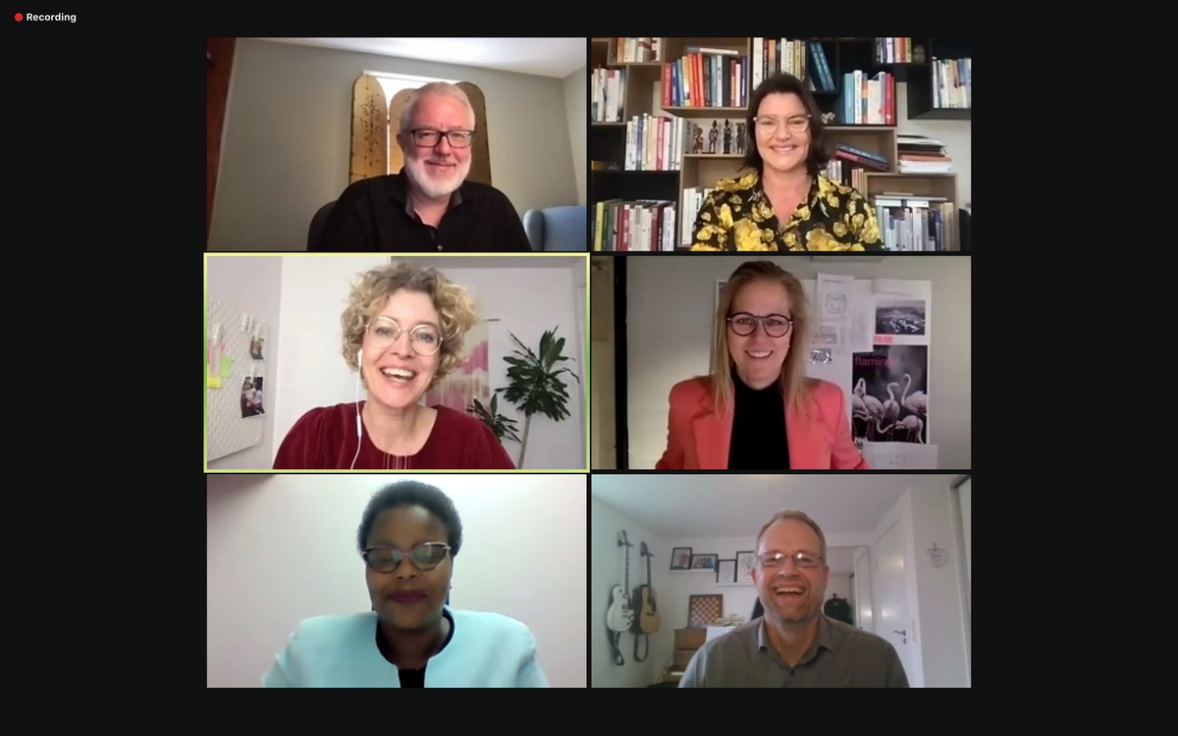In a time of heightened resignation and a war for talent, it’s imperative that organizations, and especially employers and HR, focus on strengthening retention strategies. A new study finds that by 2030 there will be a global human talent shortage of more than 85 million people, despite the revolution we are experiencing at the moment with technological solutions! Therefore, we need to build organizations humans really want to work in, and also, develop strategies to not only attract, but also retain great talent.
One way of doing this is offering employees certain kinds of perks and benefits. However, what employers think employees want is often entirely different from what employees actually want. This incongruence of thought might in itself lead to resignation - and therefore, the root of the problem needs to be dealt with. As a Leadership Coach, I have heard both sides of the story - I have clients who are trying to retain their team members, and I also have clients who are contemplating resignation. Understanding the why behind high turnover rates is the first step to addressing the problem - followed by building on retention strategies accordingly. In this article, I will walk you through some retention strategies, as well as explaining how talent development can also help with retention.
What Factors Contribute to Resignation?
During and right after the pandemic people quit their jobs at a record pace in what was dubbed the Great Resignation. A number of complex reasons laid behind this mass exodus of the workforce, but it didn’t stop there! According to CNBC “almost 4.2 million people voluntarily left their jobs in November 2023, marking it the 18th straight month of record-breaking quits in the U.S.”
Especially the younger generations are considering leaving their jobs, in fact, surveys show that up to 70% of all gen Z’ers and millennials are considering leaving their jobs.
Let’s take a look at some of the reasons why people quit their jobs:
- Burnout, overwork and rising mental health concerns. A third of workers – managers and non-managers alike – say in an Inc.com Survey that they are considering changing companies for the sake of their mental health. Taking care of oneself, not accepting a culture of overworking or feeling pressured beyond one’s resources - and wanting one’s manager to care! - is a good way of protecting one's mental health. It is also a sign that employees are no longer accepting a work-environment that is negatively impacting their wellbeing (which is good!).
- Lack of engagement. Employees who do not feel engaged at work are much more likely to be looking for new job opportunities. Job engagement and happiness are closely linked, so when the engagement drops, so does the happiness. This is bad for people and bad for the business - and needs to be dealt with if you want to retain people in the long run.
- Lack of flexibility and freedom. The pandemic elicited new workplace norms that embraced remote work and flexible schedules. In light of this, employees have had the opportunity to reassess their priorities and preferences. Organizations that have not adapted to these employee needs, are experiencing higher levels of turnover.
- Lack of learning and growth opportunities. Employees want to learn and grow - that is a fact. Organizations that treat employees as ‘’cogs in a wheel’’ rather than humans who deserve and need nurturing and development - are experiencing the effects of the turnover tsunami and are also missing out on the massive potential that can be unlocked if employees are given the opportunity to develop themselves continuously.
- Lack of purpose and a great vision/mission. In recent times we have seen a reappraisal of employee wants and needs - employees are looking for workplaces that are meaningful and have a vision / are on a mission they really want to help bring to life.
- Poor leadership and toxic workplace culture. Leadership matters! In fact, a survey shows that a staggering 43% of all workers in the UK have, at some point in their careers, left a job because of a bad manager. Another reason is a toxic workplace culture. An attractive workplace culture, where people feel valued, respected, psychological safety and happiness matters - and if it does not exist, people either consider leaving or have already left!
- Inadequate / unfair compensation. Equal pay, fair, transparent pay and compensation should be a priority for every organization, but unfortunately this is not the case. People are, however, to an increasing degree becoming aware of their own worth, and if they are not paid to the extent they deserve or can expect from benchmarking their pay, they will leave.
In the next section, I will discuss an antidote to the talent resignation: Talent development.
What is Talent Development - And Why Should It Be Nurtured?
Talent development refers to the efforts that foster learning, employee engagement, talent management, and employee development to drive organizational performance, productivity, and results. It can be a driving force for organizational results by creating the processes, systems, and frameworks that advance training and development strategies, succession planning, and learning opportunities.
Talent development helps individuals to find their energy and focus on bringing their best selves to the workplace. It is critical that organizations nurture employee strengths - and employ such strengths to a team setting.
‘’When we think about talent development, we think about performance management; we think about goals—things at the individual level. And that’s not a terrible place to start. But real work always happens in collaboration; it always happens in combination; it always happens in teams.’’ Marcus Buckingham
Retention Strategies: What Actually Works?
Now that we have examined the why behind resignation and what talent development is, it’s time to look at the “what” of an employee retention strategy - and how to execute upon this. Retention starts with thoroughly understanding employee needs. Organizations that take the time to understand their employees needs will have an edge in retaining talent. Let's look at some well crafted retention strategies:

1. Take a Data-Driven Approach
Organizations will not be able to execute effective retention strategies if they fail to understand employee needs. This is why it is critical to ask for employee feedback via measurable methods. Employers must take a data-driven approach to improving retention: data that will help determine not just how many people are resigning, but who exactly has the highest turnover risk (e.g. employee demographics), why people are leaving - and staying! - , and what actions can be put in place to prevent further resignations.
2. Develop Tailored Retention Programs
Employee retention programs can help you protect your most valuable assets: People. But they need to be grounded in the actual needs of your employees, not what you think they need - as already mentioned. That’s why there is no “one-size-fits-all” approach to retention programs. It depends on the data collection you have gathered - what does it show? And when you ask your employees - what do they really want? Once this is established, the next step is to take action and offer different programs and initiatives aimed at both individual-, group-, and organizational needs
3. Give Employees Continuous Development Opportunities
Great employees are interested in growing and developing throughout their careers - and organizations that foster this will reap the benefits of stronger retention rates. Development is no longer an optional perk or reserved for certain positions - it’s expected by today’s talent and needed for tomorrow’s organizations! Not only does lifelong learning opportunities and skills training close the talent-gap for you, it also attracts and retains employees, who are on the outlook for organizations that truly invest in people and care for their learning needs.
4. Offer Flexible Working Conditions
Many employees are struggling with their work-life balance as well as their mental health, as previously mentioned in this article. Offering flexible working conditions has turned out to be a great recipe for retention - and we can now say for sure that hybrid and remote work is here to stay. Even if you as an organization cannot offer employees to work from home, help them do their work on their own terms through empowerment. Or as one of my coachees, a business leader here in India, told me he does: He tells his team to prepare a blackout period each day. During this time, employees do not need to show up for anyone, they can do anything - from yoga, to childcare needs, to cooking - no questions asked. The leader who created this blackout schedule was rewarded with 0% attrition throughout the covid pandemic- which just goes to show how important it is to offer flexibility to your employees.
5. Invest in Leadership Development
There is a saying that people do not leave companies, they leave bad managers. Even if this is not the only reason why people seek new opportunities, it for sure counts for many! Great leadership and the right leadership development program is paramount for the results and the course of the whole organization as well as for employee happiness, engagement and productivity. It is important that leaders get the right competencies to lead human beings and teams, and are able to create a great feedback- and working culture. Being empathetic and mindful towards employees matters more than you might think for retention, and surveys show that especially younger generations are deliberately looking for leaders who care.
6. Encourage Employees to Explore their Hobbies
Another piece of the retention puzzle is interestingly found in the exploration of hobbies outside of the workplace. In a recent large workshop session, I brainstormed with managers on how to retain their teams. An interesting piece emerged: A lot of people are becoming more interested in hobbies, and more in touch with their identities outside of work. This is a new phenomenon for many - as our identities have so often been merged with our business cards. One person shared with me how she has developed a passion for cooking thanks to exotic recipes on youtube, and feels like she can start a weekend food delivery business. She is considering resigning from her full-time job if her food business picks up. I asked her ‘’Do you hate your job?’’, and she replied to me ‘’No, I love my job, and if I can find a way to do both I would love to’’. I told her to speak to her manager about this, and the possibility of reducing her current workload. She immediately responded: ‘’He won’t listen to me’’. Being unsupportive of people’s hobbies and passion projects is not conducive to retention. In fact, it drives people away.
Conclusion
An increasingly high number of employees are resigning, or thinking about doing so. Organizations that take the time to learn why, act accordingly, and invest in talent development and effective retention programs will have a clear competitive advantage. Employees that do not feel appreciated or invested in - will ultimately become unhappy employees. And unhappy employees are those that are most likely to resign. The great resignation is real, but this unique moment of reshuffling presents massive opportunities. To seize it, organizations must take a step back, listen, learn, and make the changes that employees want.











